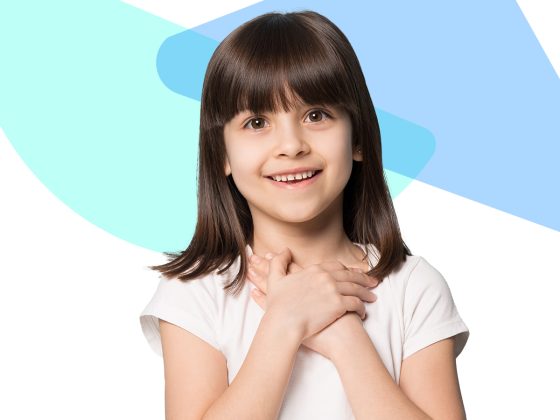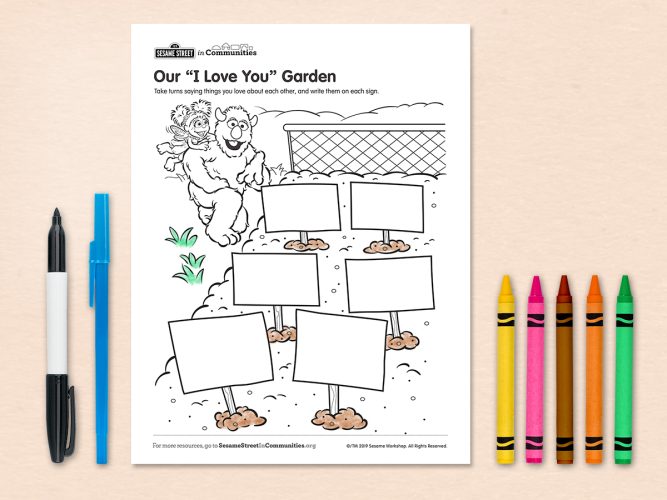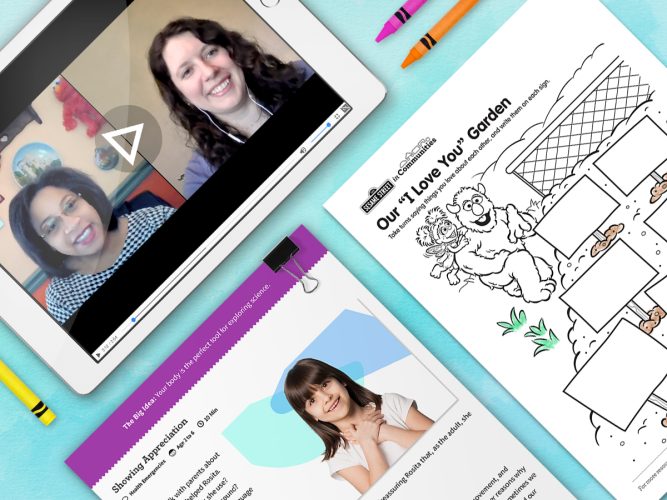
Showing Appreciation
Celebrating all that we’ve accomplished together can help us feel thankful and proud.
It’s easy to see how feeling and showing gratitude for others is nice for the person being appreciated. But research has shown that it is good for the person giving the appreciation, too! Having feelings of gratitude and thankfulness are good for the brain—the positive emotions can reduce stress and increase happiness.
Gratitude helps build empathy, too. By working to recognize the positives in other people, it becomes easier to see those positives all the time. This, in turn, makes it easier to see other people’s points-of -view.
Even your own sense of self-esteem is helped by feeling and showing gratitude. When you are grateful for those around you, you may compare yourself to them less often. This can help you recognize your own positive qualities.
The best thing about feeling and showing gratitude and appreciation is that it is something you can do. You can help your child, and yourself, make gratitude and appreciation a habit with just a few simple activities.
Thankfuls
At the end of every day, as you gather around the dinner table, have bath-time, or get ready for bed, ask everyone to name one thing they are thankful for. It can be an event, a friend, a family member, or something bigger like health or nature. When you commit to this routine every night, you help children understand that there is always something to be grateful for, even on hard days.
Today I notice you’re…
With your child, create a “I notice” board out of poster board or construction paper. At the top, write “Today I noticed…” and draw a frame around the edges, leaving a big blank space in the middle. Hang the poster somewhere in your home, along with a pen and a stack of sticky notes or slips of paper with tape underneath. Each day, have every member of your family write one positive thing they noticed about someone else and stick it to the board.
You might write “Today I noticed Mommy made me breakfast!” or “today I noticed that Grandma is wearing a pretty sweater.” You’ll quickly see how these positive statements encourage everyone in your home.
“I’m so Lucky!” jar
Get a big mason jar or other container and help your child decorate a label for it that says, “I’m So Lucky!” Tape the label to the jar and find a special place for your child to keep it. Any time something positive happens to your child, encourage her to write it on a slip of paper and put it in the “I’m So Lucky!” jar. Remind your child that lucky notes can be for both big things (“we got a new dog!”) and little things (“I’m in a warm home!”). From time to time, sit down with your child and read the notes from the “I’m So Lucky!” jar together.
Thank you notes
Help your child build the habit of writing lots of thank-you notes. They can write thank yous to their teachers for a week of great classes, to servers in restaurants for bringing food, or to crossing guards for keeping them safe. By writing thank yous for the smallest things, your child will learn that everyday moments shouldn’t be taken for granted.
Modelling behavior
Every one of the activities above are also great for adults to do on their own. And the more you model everyday appreciation, the more the kids in your life will understand how to build habits of gratitude.
It’s a great idea to focus on showing appreciation for the other caregivers in your life. You are a team with the other adults who teach, watch, and take care of your child. Get in the habit of recognizing their efforts and showing them that you are grateful for what they do. Write a thank you note, make a “Today I noticed…” board just for them, or just tell them why you are thankful for the care they show your child, and your community.

Social Chat: Celebrating Together
Celebrating all that we’ve accomplished together can help us feel thankful and proud.

Gratitude Garden
Celebrating all that we’ve accomplished together can help us feel thankful and proud.

Celebrating Together: Tips & Tools for Providers
Celebrating all that we’ve accomplished together can help us feel thankful and proud.
